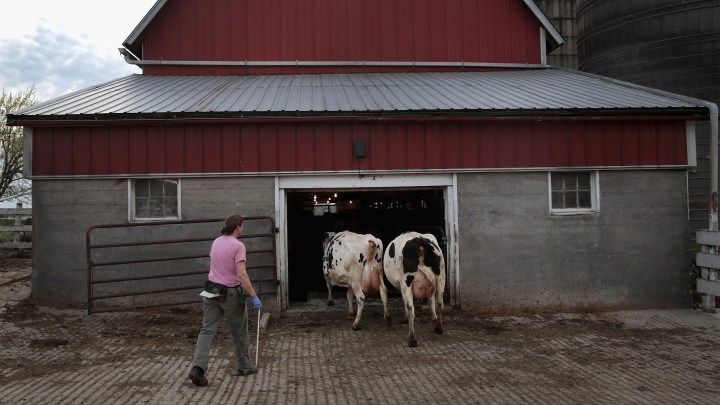
Want to understand the laws of supply and demand? Watch the dairy industry
Want to understand the laws of supply and demand? Watch the dairy industry

Dairy farmers have been on a roller-coaster ride over the past couple of years as the price of milk has surged, then fallen.
In 2019, Wisconsin dairy farmer Sarah Lloyd told Marketplace that milk was just too cheap because “we really do have too much milk on the market.”
Russia wasn’t importing any, and the European Union was producing more of its own.
Then the trade war with China hit. Milk prices crashed, and Lloyd had to borrow money to keep her 400-cow farm afloat.
“The Nelson family farm has been in business for over 100 years,” she said at the time. “We’re really just digging deep into the asset base that the generations have built.”
Some of her fellow dairy farmers got out of the business. Milk supply came down, and prices started going back up.
When COVID-19 appeared, all of that milk suddenly had nowhere to go, and prices tanked again.
Today, Lloyd says the price gyrations of the past couple of years are not sustainable in the long run.
“No business can operate that way — just not knowing how you’re going to cover your costs, from an even day-to-day basis,” she said.
“When it comes to dairy, there is a very fine line in that supply and demand,” said dairy farmer Joe Bragger, president of the Wisconsin Farm Bureau Federation. “It only takes a few-percent shift to make a big impact on prices.”
When the food-service industry essentially shut down because of the pandemic, farmers cut back production and dumped milk they couldn’t sell.
Then, the government started buying excess dairy products to deliver to people in need.
And prices edged up.
Agricultural economist Dan Sumner at the University of California, Davis, said that’s when dairy farmers started ramping up production.
“They have added some heifer calves that might have not made the cut a year ago,” he said. “They’ve kept an old cow on a few more months that might not have been profitable a year or two ago.”
Sumner said that means prices could fall again.
And that worries Wisconsin dairy farmer Sarah Lloyd.
“You know, I still have my banker knocking at the door, saying, hey, remember that X amount of dollars you borrowed last year to try to hang on? Well, when are you going to pay that back?”
Lloyd said that’s going to be a lot easier if milk prices can remain stable.
There’s a lot happening in the world. Through it all, Marketplace is here for you.
You rely on Marketplace to break down the world’s events and tell you how it affects you in a fact-based, approachable way. We rely on your financial support to keep making that possible.
Your donation today powers the independent journalism that you rely on. For just $5/month, you can help sustain Marketplace so we can keep reporting on the things that matter to you.











